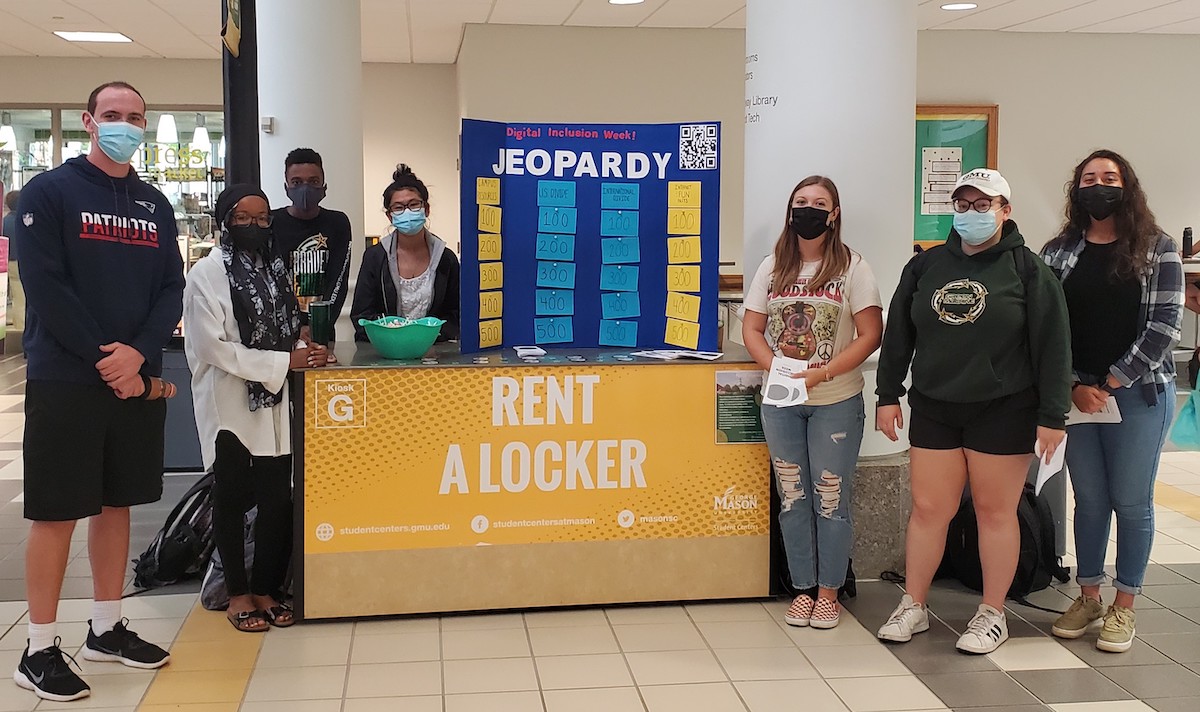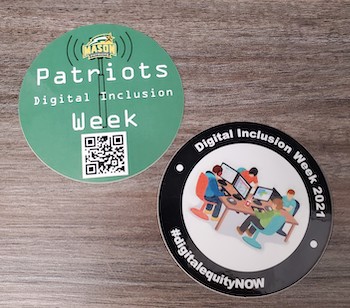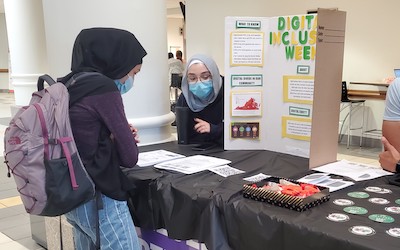
The idea of the digital divide was brought into sharp focus for Tawnya Azar, a George Mason University assistant professor of English, when she learned one of her students was completing all of her assignments on her mobile phone. Azar felt remorse for the way she had chastised her for turning in papers that were formatted incorrectly.
“She came to me very apologetically and said ‘I’m so sorry, I write all my papers on my phone, it’s my only computer.’” Azar recounted. “I felt so bad that I was so hard on her.”
Azar considers that the foundational story for her research and the classes she teaches in the Honors College this semester—two sections of Honors 261 Bridging the Digital Divide.
“I would define the divide as people who have access and literacy and people who don’t have access and literacy,” said Azar. “To me, essentially, digital divide is the digital haves and the digital have nots.”

“Bridging the digital divide means helping bring the entire world into the future,” said Don Shaw, a sophomore history major. “Access to technology is important for quality of life, so bridging the divide allows us to improve the lives of numerous individuals.”
Students put together an advocacy campaign as part of Digital Inclusion Week to raise awareness about the digital divide. Students in each section of the course divided into three groups: fundraising, digital content, and in-person activities. Students also created a website, pamphlets and flyers, and distributed stickers highlighting digital inclusion.
They created a Jeopardy!-style game to share with people in the Johnson Center, where people answered such questions as “What percentage of the elderly don’t have access to technology?” Answer: 27%, and “Which language is 60% of the internet written in?” Answer: English.
Patricia Troup, a junior with a double major in sociology and Spanish, helped to manage social media for the campaign.
“With our social media page, we had more than 100 followers. I saw firsthand interactive story posts like trivia, rating one's understanding of the topic, and answering questions I asked through the story feature on Instagram. I think there was really good engagement,” Troup said.
Azar said the class includes an aggressive reading schedule at the beginning of the semester, along with a community engagement project where students volunteer outside of class with one of a number of organizations whose mission is to address the digital divide. Partners this semester include Computer Core, Senior Planet, Fairfax Senior Center, EDU Futuro, and Girls Who Code.

Sophomore Iram Noor volunteered with the nonprofit Computer Core. “What drew me to this particular organization was the direct impact it has on underserved adults,” she said. “They help individuals learn how to use the computer and develop vital skills with a variety of software programs, such as keyboarding and Microsoft Excel.”
The final project for the class is a design thinking project, where students identify and address a challenge or question in response to the needs of the community.
“I have learned a lot about inequities that people with disabilities face regarding the digital divide,” said Theresa Boyd, a third-year special education major. “As educational practices change and adapt to modern technology, it should be constructed with the needs of all individuals in mind by using universal design practices during the developmental stage.”
Boyd said those who are developing web pages and other technology should recognize that the needs and abilities of individuals can change, including the needs and abilities of those developing the software themselves.
